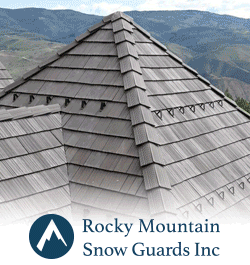Protecting Commercial Roofs From the Sun

By Topps Products.
The sun can take a toll on commercial roofs. Learn how to help them withstand the heat.
Editor's note: This article can be used to educate your customers on the impact the sun has on a roof or serve as a resource for employees new to roofing or those who want to learn more.
When we think about how nature can deliver a beating to commercial roofs, we usually think about rain and wind. But in dry, hot climates, roofs face another of nature's challenges, one that can be just as devastating over time: the sun!
Prolonged exposure to a hot sun can take a serious toll on commercial roofs, weakening them through thermal shock, UV breakdown, and heating the building beneath them.
Below, we'll talk about what you can do to protect the most vulnerable part of the building from sun damage.
How Hot Can a Roof Get?
The temperature of a roof under the sun depends on its material and color, as well as the environmental conditions around it. This is because of the way in which solid materials absorb the sun's rays. Sunlight enters the atmosphere as ultraviolet (UV) radiation. The roof absorbs those UV rays and converts them to infrared radiation, which is re-emitted as heat.
We all know that darker colors absorb more of the sun's rays (that is, in fact, why they're darker), so darker-colored roofs will be hotter under the sun. A black roof can be anywhere from 50 to 100 degrees hotter than the ambient temperature, meaning that, on a 90-degree day, the roof could be as hot as 190 degrees. Unpainted metal can be as much as 50 degrees hotter than the surrounding temperature, while a plain white roof can be as much as 30 degrees hotter. Specialized roof coatings, like those produced by the Topps® company, oftentimes convert those temperatures to just 2° F over the outside air temperature.
What Areas Are Most Susceptible to Heat Damage?
Unsurprisingly, the areas of the country most affected by heat damage are the ones known for their hot, dry, sunny climates: Texas, New Mexico, Arizona, and Nevada. As anyone who lives in these great states knows, summers can be brutal. Averages hover in the 90s and highs can soar towards 110 degrees. Based on recent data, roofs in the Midwest and South often experience summer temperatures hovering in the same range, too.
But it's not simply the heat that puts buildings in some states at risk, it's also the elevation and aridity. Because atmospheric moisture pulls UV radiation out of the air, roofs with less humidity and atmosphere between them and the sun, are more exposed to UV radiation. A roof in Las Vegas on a 90-degree day will be more vulnerable, in a shorter period, than a roof in Miami on a 90-degree day, because it is absorbing so much more UV radiation.
The Effects of Extreme Heat on a Roof
Heat exposure can damage roofs or compromise buildings in a few important ways.
Weakened Roofing Materials
Extreme temperatures can take their toll on roofing components, causing them to crack, curl, break down, and dry, and shorten their lifespan.
Thermal Shock
Like most materials, when roofs get hot, they expand, and when they cool down, they contract. This constant process of expansion and contraction will compromise their structural integrity, causing them to crack and disintegrate, and pulling apart seams. For metal roofs, fasteners loosen, and seams open up. This is especially a concern in climates where temperatures can fluctuate vastly and quickly between day and night. Or, where cool rains can shower onto hot roofs creating “thermal shock”.
UV Damage
UV rays don't simply damage roofs on account of the heat they cause. They can also alter the molecular structure of some roofing materials, causing oxygen molecules to bind with hydrocarbons in the material, which can lead to brittleness and cracking. Similarly, UV rays attack the original protective finish of other roofs, such as metal roofs. That’s when rust develops.
Cooling Costs
When roofs absorb heat from the sun, they emit much of that heat below them, raising building temperatures. This, in turn, requires the building owner to use more energy to keep their building cool and comfortable.
How to Protect a Roof from Extreme Heat
As we've shown, roofs take a beating from the sun. However, there are a few things that can be done to substantially mitigate that damage.
Inspect Annually for Vulnerabilities and Trouble Spots
You should inspect your customers' roofs once a year for signs of sun damage. Check for gaps in seams, and cracking or curling of composites. Any signs of damage should be addressed immediately, and in some cases, your customer may consider a restoration process to bring their roof back into shape. This process is where a stitch-in-time can save nine. Wait too long, and the option expires.
Add Ventilation
Making sure that the area beneath the roof is properly ventilated can help to reduce heat and humidity build-up.
Protect the Roof With a Heat-Resistant Coating System
The single most effective way an owner can protect their roof from sun and heat damage is to apply a heat-resistant coating on it. These coatings reflect UV radiation away from the roof, so that the roof can't absorb it and turn it into heat.
Metal roofs with a reflective coating can be about 40% cooler than unpainted metal roofs, and the temperature of black roofs can drop as much as 50 degrees F when a reflective coating is applied. Heat-resistant coatings can protect a roof from thermal shock and UV damage, while also slowing the aging process and lowering cooling costs.
Conclusion
The sun is a formidable foe to a commercial roof. Its rays can bake roofing materials, break down structural components, and cause devastating thermal shock. In places that are especially exposed to the sun, a little preparation can prevent a lot of damage. Applying a heat-resistant coating and inspecting the roof regularly are essential to its health and longevity.
Discover the benefits of becoming a Topps® Certified Installer
Original article source: Topps Products






















Comments
Leave a Reply
Have an account? Login to leave a comment!
Sign In